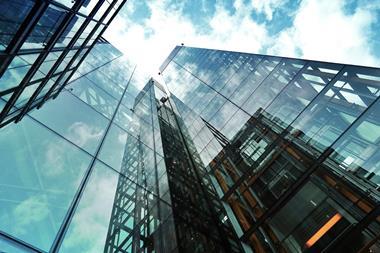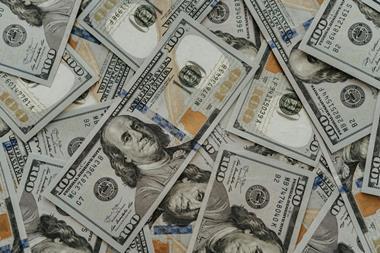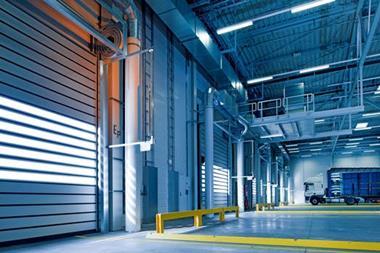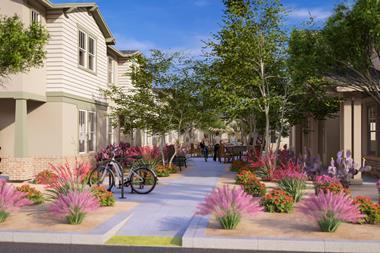In spite of the problems north of the border Mexico City is booming and could offer significant returns. But the potential for expansion is limited - and will new fiscal measures spoil the party? Hugh Collins reports
As the subprime crisis eats into US payrolls, and house prices, it is in some way a familiar story. Banks had lent to people who couldn't repay, and real estate speculation had bid prices up to unsustainable levels. As foreclosure signs sprouted across California, it seemed like classic boom and bust.
But a few miles south, in Mexico, the story wasn't so familiar. In a country that sends 80% of its exports to the United States, a US wobble has often created a Mexican train crash.
But while US growth has plummeted, and real estate investors have been badly burnt by falling prices, Mexico's combination of steady growth and historically low interest rates and inflation have made the country both safe and profitable. Almost uniquely, the country combines the low risks of developed world investments with the juicy returns on offer in emerging markets.
Now, with exports expected to slip on weakening US demand, blunting the appeal of the industrial sector, investor attention is turning to the nation's capital. Mexico City is a booming market offering returns of up to 20% - but only if you know how to play it.
"There's a huge amount of investor interest," says Pedro Azcue, CEO of Jones Lang LaSalle Latin America. "But Mexico City is a complicated place to do business."
The turning point for Mexico as an investment destination was the Tequila Crisis of 1995. With a colossal burden of debt, Mexico teetered on the edge of default, interest rates leapt into double figures, and inflation leapt to 35%. For the millions of Mexicans who had just set up their first floating rate mortgage, it was a time of default and vanishing equity.
Since then, Mexico has singlemindedly tackled each of the causes of the crisis, which produced the nation's worst recession since the 1930s. First among these has been inflation. While the US Fed has slashed interest rates to shore up its shaky economy, the Bank of Mexico has stood firm with rates at 7.5%. And while inflation currently stands at around 4.25% and rising, it is a far cry from the double digits of just a few years ago.
The Mexican peso, long a cause of concern for foreign investors, now moves within the range of 10-11 pesos per dollar. The days of boom and bust also seem a thing of the past, with the nation consistently racking up growth of 2-3%, even in the current unfavourable conditions.
"Conditions are much better in the last four or five years," says Neil Paragi, managing director of Harcourt Alternative Investments.
The first to benefit from the new stability was the industrial sector along Mexico's border with the United States. With strong US demand, manufacturers were eager to expand their operations and export goods via The North American Free Trade Agreement (NAFTA). Risk-hungry foreign investors, mainly from the US, were only too happy to provide the financing.
But while over $2bn of foreign money has poured into the industrial sector in the last three years, the canny investors are now turning their attention further south, to a capital whose real estate market has frequently belied the city's status as one of the globe's largest urban settlements.
"Our industrial platform has moved south," says Roberto Ordorica, vice-president of Prudential Real Estate Investors. "We're not just focused on light manufacturing any more."
Mexico City today is a jungle of new developments. With economic stability, the nation has received a flood of foreign investment - $23.2bn last year. These foreign firms, from Banco Santander to Burger King, look almost exclusively to Mexico City as a place to set up shop.
As a result, barely 150,000m² of Class A office space is available in the nation's capital, with demand running at almost four times the level of supply in certain areas of the city. In other words, the office market has boomed.
With demand steaming ahead - foreign direct investment was up over 20% on 2006 - and supply running at barely 5%, Mexico City has seen a steady climb in rents, almost 20% in the last three years.
And these are not just any old leases. Mexico, unlike other Latin American countries such as Brazil, allows firms to rent their properties in foreign currencies. Dollar leases are thus commonplace, allowing investors to tap into dollar funding. And with US interest rates running at 3%, compared with 7.5% in Mexico, that means it is a lot easier to get financing for major investments.
Ordorica, however, warns that dollar leases will only make sense for properties directly related to the export market. Investors who insist on dollar leases elsewhere, he says, can often create currency mismatch in their search for a safe investment.
"The income driving those [non-export] leases is peso based," Ordorica says. "You don't want to create mismatches."
The office market faces an uncertain future. While foreign investment has been a driving force, pushing up demand and so rents and cap rates, local factors also play a role. Mexico City is built on a dried-up lake bed, and mountains surround the city. With 40m residents in the greater city area, space can often be at a premium, and even when you find it, building large developments on top can be a challenge, to say the least.
In recent years, the city has alleviated the stress by reclaiming the Santa Fe rubbish dump in the north west of the city, and transforming it into one of Latin America's top business districts. But development has taken its toll: a commute from downtown Mexico City to Santa Fe can take up to an hour and a half, and firms are beginning to balk at the thought of being so far from the action.
What is not clear is where the alternatives are. Developments elsewhere are fraught with zoning problems (see below), and new projects may prove much costlier than those of even just a few years ago, as developers struggle to obtain large blocks of space in accessible districts.
"We looked at the office market about seven or eight years ago," says Thomas McDonald, chief strategic officer of Equity International, a Chicago fund with investments in Mexican hotel and industrial properties. "We didn't like it then, and nothing has changed."
For Ordorica, the future of office markets is to look beyond Mexico City. Monterrey, an industrial city on the US border, currently accounts for 10% of the nation's office market and is home to Mexican multinationals such as cement giant Cemex. Ordorica predicts that foreign multinationals will increasingly start looking to cheaper border cities to locate their headquarters.
"Corporations are going to say, "what if we move to Monterrey, or Guadalajara?" Ordorica says.
Local factors are also significant. There is more to Mexico's transformation as an investment destination than rosier macroeconomic statistics. Take a walk down any Mexico City high street, and you can see that both consumers and businesses have changed considerably in the last ten years, creating demands for properties that were once unheard of.
Among the most noticeable of these changes has been Mexico's banking industry. In the run-up to 1995, Mexico's small, recently privatised banking industry eagerly splurged credit to anyone and everyone who could take it, with lending to the private sector doubling in the space of seven years.
In the post-crisis clean-up, the nation's financial sector was sold for a song, and foreign banks were quick to take advantage. Citigroup, and Spain's BBVA and Banco Santander now hold over 70% of all Mexican bank accounts (an issue that the government competition commission has vowed to address). These banks have brought new lending techniques, and eagerly taken advantage of falling interest rates: five years ago the average mortgage interest rate was nearly 20% a year, today it is barely 10%.
Taken with the availability of dollar-denominated leases, this allows investors in Mexico to take on an ever-higher level of leverage at rates that belie Mexico's status as an emerging market.
"There's not a huge difference between borrowing for investments in the US," Azcue says. You can normally get funding for around 7%, compared with 9 or 10% a few years ago."
Equally important has been the rise of Mexico's retail sector. As incomes rise, Mexicans now have greater purchasing power. Increasingly, they are turning away from daily visits to the food markets, and doing more of their shopping in supermarkets. Wal-Mart de México, the nation's top retailer, spent $1bn on new stores in 2007, and has another $1bn lined up for 2008.
"Increasing prosperity and a stable economy are attracting a growing number of foreign retailers," says a Cushman and Wakefield report.
International investors have been quick to get in on this new growth. Equity International set up a Mexico Retail Properties fund, which holds $600m in retail assets across Mexico. Carlos Real, Mexico Retail Properties' CIO, has estimated that the average return on his investments (70% of which involve a Wal-Mart de México store) is around 11-12%.
Some have warned that with several dozen foreign funds competing for retail real estate, cap rates will inevitably fall. Real highlighted a two percentage point drop in returns between 2005 and 2007. But with Wal-Mart de México lining up another $1bn for investment this year, and the strong performance of retailers on the Mexican stock exchange, the supply of sites seems well placed to meet the growing investor
"There's huge pent up [consumer] demand," Ordorica says. "When you have a city of 25m people, then they'll want to buy a lot of diapers, tortillas, Coca-Cola."
Things look good but as in any developing country there is a downside. When subprime smashed into the US housing market and economy, Mexican real estate firms were eager to inform anyone who would listen that it couldn't happen south of the border, thanks to stringent credit controls and a banking sector that had never had to chase mortgages. But while markets have remained steady, Mexico is still a city for those who know what they're doing - anyone else can easily get burnt.
The standout example is the much-heralded Torre Bicentenario project. Announced in July 2007 amid great fanfare, the Torre was the brainchild of a group of investors including Amancio Ortega, Spain's richest man and owner of the Zara clothing chain. Designed by Rem Koolhas, the Torre was to be placed near the historic Chapultepec Park, one of the most exclusive areas of the city.
Almost as soon as the project was announced, however, it hit a snag. City zoning regulations stated that buildings in that region of Mexico City could not be higher than six storeys tall. The Torre Bicentenario was planned to be 85 storeys.
Almost immediately, a campaign mobilised against the project. Local government representative Gabriela Cuevas warned that the city would have to upgrade local parking, electricity and water facilities, as well as constrain traffic through the city.
Cuevas dismissed the idea as "nothing but an idea on paper".
Today, nearly a year on, the Torre is no closer to being built than the day it was announced.
All the real estate professionals interviewed emphasised the importance of foreign investors having a local partner who knows the market and can navigate the various pitfalls of local government and business. With investors crowding into the marketplace, such local expertise can be all-important.
"Permits, zoning, construction, supplier relations," Ordorica says. "You can't just push a button, and things get done."
Indeed, in some ways the environment for foreigners is darkening. The city government recently changed the way in which local real estate taxes, locally known as the IETU, are calculated, in a bid to take advantage of the real estate boom. Properties are now taxed according to a dizzying combination of the value of the land, the value of the construction, facilities in the building and facilities in the neighbourhood.
The government, led by left wing mayor Marcelo Ebrard, insists that very few property-owners will be seriously affected by the tax changes. But there is no doubting that the IETU is now more complicated than before.
"Anything that makes the situation more complicated is bad for investment," Azcue says.
In January, finance secretary Agustín Carstens slashed predicted growth for the year from 3.4% to 2.8%, citing unfavourable international conditions. But while the Mexican stock exchange is down for the year, the nation's fundamentals not only seem strong, but improving.
President Filipe Calderón has announced a $60bn investment plan to upgrade Mexico's creaking road, air and sea infrastructure, and vowed to build and finance 4m new homes by 2012. Both plans are expected to help compensate for lagging exports to the US.
Worries do remain, particularly in the banking sector. Although the Mexican mortgage-bond industry has been a success story in recent years, doubling in size every year since 2003, many international bond investors have started to express doubt. They fear that banks have been too bullish in their lending, and that default rates on mortgages are already climbing.
"[The defaults] will start with mortgages, then cascade through the economy," says Walter Molano, head of research at BCP Securities in Connecticut, USA.
For Azcue and Ordorica, the key to success in 2008 and beyond is to focus on development. With financial stability and the mortgage market still in its infancy, the market suffers from a lack of quality tradable product. As such, the only way to make money is to get in on the ground floor, rather than look to snap up assets on the market.
"There's just not enough stable yield-producing real estate," Azcue says. "The real opportunity is in building something from scratch."












